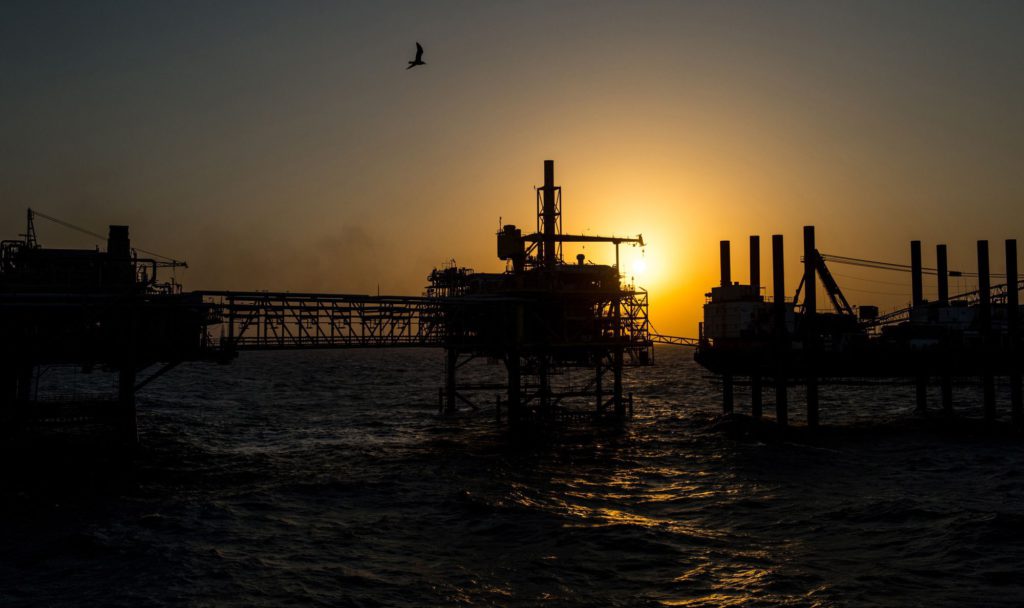(Bloomberg) — Brent fell from a three-year high above $80 a barrel, unable to withstand the pressure of U.S. equities heading toward their biggest decline since May.
The international crude benchmark rose above the key, psychological level for the first time since October 2018 earlier Tuesday, on signs that demand is running ahead of supply and depleting inventories. West Texas Intermediate also pared gains, holding around $75 a barrel.
Oil’s latest upswing follows a flurry of bullish price predictions from banks and traders and speculation the industry isn’t investing enough to maintain supplies. The jump to $80 is adding inflationary pressure to the global economy at a time when prices of energy commodities are soaring. European natural gas, carbon permits and power rose to fresh records Tuesday, with little sign of the rally slowing.
Oil is “on an upswing of demand recovery” as the pandemic retreats and more countries open their borders to travel, OPEC Secretary-General Mohammad Barkindo said in an interview with Bloomberg Television.
Oil has rebounded from its eye-watering collapse last year amid record output curbs from the OPEC+ producer group and a global economic recovery that has boosted demand. Prices could hit $90 this year as stock drawdowns deepen, Goldman Sachs Group Inc. says, while Bank of America Corp. has talked up an outside chance of hitting $100 over the winter.
OPEC+ may even need to consider increasing production by more than its current plan of 400,000 barrels a day per month, Chris Bake, head of origination at Vitol Group, the world’s largest independent oil trader, said in a webinar.
The oil market is a “different picture from the one that was there a month or six weeks ago,” Bake said. “Demand has been good. Oil substitution is happening a lot as natural gas just runs and spirals pricing-wise.”
Barkindo said demand will continue to increase though warned the recovery could still be “bumpy.” OPEC+ will “continue to do what it knows best”, when it meets on Oct. 4, which is “how to keep the market in balance.”
Much of the outlook for the rest of the year is likely to hinge on just how cold the northern-hemisphere winter gets. Analysts and consultants have published a range of estimates for how much demand could be boosted by soaring gas costs and frigid temperatures, swinging from a few hundred thousand barrels a day to 2 million.
Oil has also managed to recover despite jet fuel — a key component of demand — remaining hobbled by the pandemic. Yet other pockets of consumption have rebounded strongly, including fuels used to make plastics and those used in manufacturing processes, such as diesel. Global oil consumption is expected to return to pre-pandemic levels in the third quarter of 2022, President of BP Singapore Eugene Leong said in an interview.
The rally also has the potential to menace the recovery in consumption, according to Morgan Stanley analysts Martijn Rats and Amy Sergeant. Diesel prices expressed in the local currencies of Brazil, Mexico, Turkey and South Africa are close to or above levels when Brent was at $110 a barrel, they said, suggesting there could be some demand erosion.
With prices now around $80 a barrel, forward values are also surging. WTI for 2022 is trading close to $71 a barrel. Gains in forward prices in theory make it more attractive for producers in the U.S. to lock in production, but growth has been limited this year as investors push for returns to shareholders instead of higher output.
“In oil we’re over $80 a barrel this morning on a Brent basis, and we look at the rig counts in the U.S. and other parts of the world, they’re showing you that, hey, $80 a barrel is simply not enough,” Jeff Currie, head of commodities research at Goldman Sachs, said in a Bloomberg Television interview. “There’s always some investor somewhere in the world that will put capital to work if the returns are high enough. The question is where is that number.”
Meanwhile, in the U.S., crude inventories are expected to deplete further after seven straight weeks of declines. Nationwide stockpiles dropped 2.5 million barrels last week, according to a survey of analysts ahead of U.S. government data on Wednesday. The industry-funded American Petroleum Institute will release its stockpile tally later Tuesday.
More stories like this are available on bloomberg.com
©2021 Bloomberg L.P.











